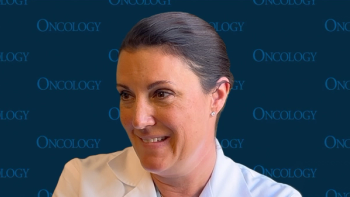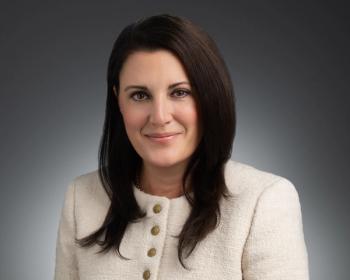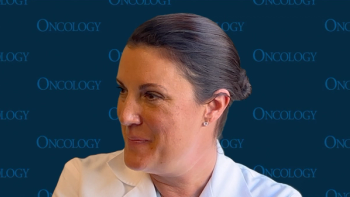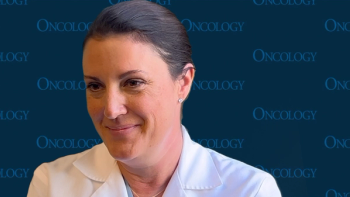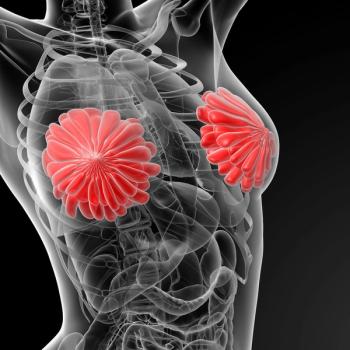
Oncology NEWS International
- Oncology NEWS International Vol 8 No 8
- Volume 8
- Issue 8
Breast Cancer Prevention With Tamoxifen Appears Cost-Effective
ATLANTA-Compared with other accepted medical interventions, breast cancer prevention with tamoxifen (Nolvadex) therapy is cost-effective, according to a poster presented at the ASCO annual meeting
ATLANTACompared with other accepted medical interventions, breast cancer prevention with tamoxifen (Nolvadex) therapy is cost-effective, according to a poster presented at the ASCO annual meeting
The risk of developing invasive and noninvasive breast cancers was reduced by 49% and 50%, respectively, among women taking tamoxifen in the National Surgical Adjuvant Breast and Bowel Project (NSABP) P-1 Breast Cancer Prevention Trial (BCPT).
That risk reduction, said Les L. Noe, MPA, Ovation Research Group, Highland Park, Illinois, translates to a cost per life-year gained within a range similar to other commonly accepted therapies such as screening mammography, HIV treatment, and the use of the ACE inhibitor captopril (Capoten) for treating hypertension.
In this decision-analysis model, lifetime discounted incremental costs and effects were calculated using data on the benefits and risks of tamoxifen as observed in the BCPT and using treatment costs from the literature.
Researchers estimated the incremental cost-effectiveness of using tamoxifen as preventive therapy in age-group-defined cohorts of women at high risk for developing breast cancer, compared with no prevention. They also evaluated the cost-effectiveness of tamoxifen in the subgroup of women with a previous hysterectomy.
Beyond drug costs, investigators included such factors as savings from disease avoided and costs from higher rates of endometrial cancer.
Under the most conservative assumptions from our base-case analysis, Mr. Noe said, the incremental cost-effectiveness of tamoxifen is $41,372 per life-year gained for women aged 35 to 49 years, and $68,349 and $74,981, respectively, for women aged 50 to 59 years and 60 to 69 years. In women with a previous hysterectomy receiving tamoxifen, regardless of age, cost-effectiveness is $46,060 per life-year gained.
Cost-effectiveness improves to as low as $10,196 per life-year gained under more reasonable scenarios where tamoxifens effects persist beyond 5 years and health benefits are not discounted, Mr. Noe reported.
In comparison, the cost per life-year gained for zidovidine (AZT, Retrovir) treatment for HIV disease is about $85,000; for captopril for hypertension, $80,000; and for screening mammography in women under age 50, $230,000.
Cholesterol-lowering with lovastatin (Mevacor) costs between about $105,000 to $210,000 per life-year saved, depending on the dose taken and the age of the recipient. Coronary artery bypass surgery costs just over $10,000 per life-year saved.
The Bottom Line
The bottom line is that it is still a personal decision made between the physician and the patient. This analysis just shows that they should not be deterred from choosing tamoxifen therapy based on economic impact, Mr. Noe said.
He concluded that a tamoxifen prevention strategy to reduce the incidence of breast cancer is particularly cost-effective in women aged 35 to 49 years and in women of all ages with a previous hysterectomy.
Articles in this issue
over 16 years ago
False positives frequent in CT lung cancer screening trialover 26 years ago
Stereotactic Core Biopsy Establishes Many Prognostic Factorsover 26 years ago
NCI Discovers Gene Variations From Existing Databasesover 26 years ago
CPDR Unveils First Center Solely for Prostate Cancer Researchover 26 years ago
Going Beyond CHOP in Advanced Large-Cell Lymphomaover 26 years ago
Memorial Sloan-Kettering Opens Rockefeller Outpatient Pavilionover 26 years ago
Ernst Wynder, Pioneer in Preventive Medicineover 26 years ago
AHCPR Plans Health Care Market, Managed Care Research Centersover 26 years ago
NSAIDs May Protect Against Common GI Cancersover 26 years ago
Four Researchers Receive General Motors AwardsNewsletter
Stay up to date on recent advances in the multidisciplinary approach to cancer.


